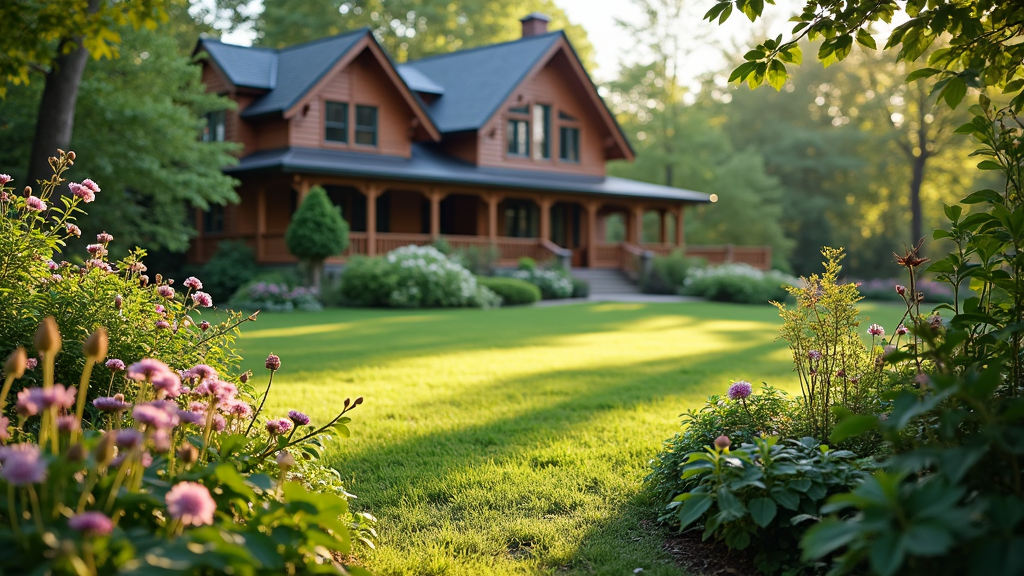Designing a child-friendly landscape is not just about aesthetics; it’s about creating a safe, engaging, and stimulating environment for children to explore, play, and learn. In Greensboro, where the natural beauty of the outdoors can be harnessed to create magical spaces for kids, effective landscaping can turn an ordinary yard into an extraordinary playground. This article will guide you through the essential elements of designing a child-friendly landscape in Greensboro.
Understanding Child-Friendly Landscapes
What is a Child-Friendly Landscape?
A child-friendly landscape refers to outdoor spaces designed with children’s needs in mind. These landscapes prioritize safety, accessibility, and engagement while fostering creativity.
Why is Landscaping Important for Children?
Landscaping plays a crucial role in children's development by providing them with opportunities to engage with nature, encouraging physical activity and imaginative play.
Key Elements of a Child-Friendly Landscape
Safety: Soft surfaces to minimize injury. Accessibility: Areas that all children can access. Engagement: Features that encourage exploration and creativity.How to Design a Child-Friendly Landscape in Greensboro
Designing your landscape with children in mind can make your outdoor space more enjoyable and functional.
1. Assess Your Space
Before diving into any landscaping project, take some time to assess the area you have available. Consider the size of your yard, any existing features like trees or gardens, and how much sun or shade different areas receive.
2. Create Safe Zones
Safety should be your top priority when designing a child-friendly landscape in Greensboro. Here are some tips:
- Soft Surfaces: Use mulch or rubber mats under swings and slides. Fencing: Install secure fences around pools or other hazardous areas. Visibility: Ensure clear sightlines so parents can easily supervise children.
3. Incorporate Play Areas
Designate specific zones for active play:
- Play Structures: Consider wooden forts or climbing frames made from durable materials. Sand Pits: A sandbox can offer endless entertainment and sensory experiences. Open Spaces: Allow ample room for games like tag or soccer.
4. Choose Engaging Plants
Selecting appropriate plants can enhance both the https://squareblogs.net/duburgkojb/greensboros-best-kept-secrets-unique-landscape-designs visual appeal of your yard and provide educational opportunities:
- Edible Gardens: Plant fruits and vegetables that children can help grow and harvest. Sensory Plants: Incorporate plants with interesting textures or scents such as lavender or lamb's ear.
5. Use Natural Elements
Integrate natural elements that spark imagination:
- Logs & Boulders: Use these as natural seating areas or climbing structures. Water Features: Small ponds or fountains can attract wildlife and provide calming sounds.
Designing Paths and Trails
6. Pathways for Exploration
Creating winding paths encourages exploration:
- Use gravel or mulch for easy navigation. Include sensory elements along the path like fragrant herbs or textured stones.
7. Miniature Gardens
Consider small garden plots where kids can plant their favorite flowers or vegetables:
- This promotes responsibility as they care for their plants.
Adding Fun Features
8. Create Themed Zones
Divide your yard into themed sections such as:
Adventure Zone: A climbing wall surrounded by soft grass. Art Area: An outdoor easel set up beneath shaded trees.9. Outdoor Learning Spaces
Incorporating educational features encourages learning outside the classroom:
- Install chalkboards on walls for creative expression.
Engaging in Community Landscaping Projects
10. Join Local Initiatives
Participate in local community efforts focused on enhancing public parks and playgrounds in Greensboro:
- Collaborating with other families builds social connections while improving shared spaces.
Maintaining Your Child-Friendly Landscape
11. Regular Maintenance Practices
Maintain safety by regularly checking equipment and plants:
- Inspect play structures for wear and tear.
12. Seasonal Changes
Adapt the landscape seasonally to keep it exciting:

- Change decorations for holidays or introduce new play activities during summer months.
Sustainable Landscaping Practices
13. Eco-Friendly Choices
Opt for sustainable landscaping methods such as using native plants that require less water: Native Plants Recommended in Greensboro: | Plant Type | Benefits | |--------------------|-------------------------------| | Butterfly Bush | Attracts pollinators | | Coneflower | Drought-resistant | | Black-eyed Susan | Easy to maintain |
Incorporating Technology Into Landscaping
14. Smart Gardening Solutions
Utilize technology like smart irrigation systems to water gardens efficiently while teaching kids about conservation practices:
Benefits of Smart Irrigation:
Reduces water waste Saves time on manual wateringCreating Community Awareness

15. Hosting Workshops
Organize workshops focusing on child-friendly landscaping techniques within your community:
Topics May Include:
Safety Measures Eco-Friendly PracticesFAQs About Designing Child-Friendly Landscapes
1) What Is The Best Surface Material For Play Areas?
Using mulch, rubber mats, or grass ensures a soft landing for kids during playtime.
2) How Can I Encourage My Kids To Help With Gardening?
Make gardening fun by allowing them to choose what to plant; provide tools sized just right for their hands.
3) Is It Safe To Have Water Features In My Yard?
Yes, but ensure they’re appropriately fenced off if necessary; shallow ponds are safer than deep ones.
4) What Types Of Plants Are Best For Kids?
Choose non-toxic plants like marigolds or sunflowers; edible plants are also great choices.
5) How Can I Ensure My Yard Is Accessible For All Children?
Create flat pathways that accommodate wheelchairs and strollers; design inclusive play equipment.
6) How Often Should I Maintain The Landscape?
Regular maintenance every few weeks is ideal; however, seasonal checks are essential too.
Conclusion
Creating a child-friendly landscape in Greensboro is not just beneficial; it's a rewarding endeavor that fosters growth, creativity, and connection with nature among children. By prioritizing safety while incorporating engaging features like play areas, sensory plants, themed zones, and sustainable practices you’ll cultivate an enchanting environment where kids thrive!
So why wait? Start transforming your yard today into a vibrant sanctuary where imaginations flourish!
By following these guidelines on how to design a child-friendly landscape in Greensboro you'll not only enhance your property but contribute positively toward nurturing future generations!